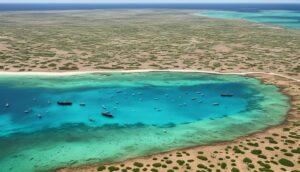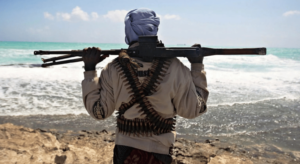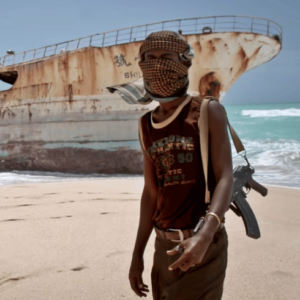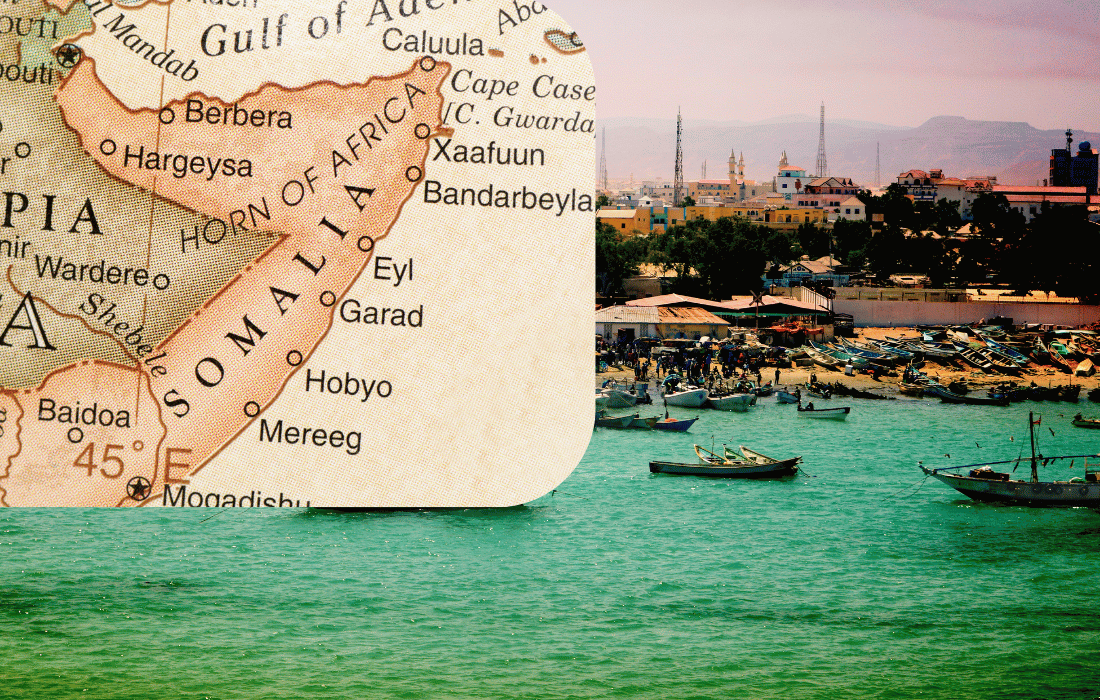When we think of pirates, we typically imagine lawless criminals robbing ships on the high seas, whatever that means. But the reality behind the story of our modern pirates – specifically Somali pirates – is way more complex than that and, honestly, pretty sad and relatable to an extent.
These pirates didn’t begin as criminals; they were once fishermen, custodians of their coastal waters, who turned to piracy out of desperation. Their story is rooted in environmental destruction, economic exploitation, and a profound disconnection from nature – a story that seems endemic to modernity. To fully understand how these defenders of their coastlines became entangled in illegal activities, we need to examine the chain of events that led them there. Let’s dive in.
The Environmental Context
Somalia’s coastline, rich in biodiversity and natural resources, was once a lifeline for coastal communities. These communities relied on fishing and marine ecosystems not just for their livelihoods, but for the basis of their cultural identity. Over time, though, external forces began to erode the natural balance.
One of the most egregious practices impacting Somali waters was illegal waste dumping. Foreign vessels, unregulated and unchecked, used these waters as a dumping ground for hazardous and toxic materials. These pollutants poisoned the marine ecosystem, devastating fish populations and making the waters unsafe for traditional fishing practices.
At the same time, overfishing by international fleets compounded the crisis. Large industrial trawlers from wealthier nations exploited the region’s resources, sweeping the oceans clean of fish that local fishermen relied on. With dwindling stocks and no means of enforcing maritime regulations, Somali fishermen faced a bleak future. Their once-thriving economy was now teetering on collapse, and their health and environment were inextricably tied to this decline.
The Surprisingly Relatable Beginnings of Piracy
Faced with these challenges, local fishermen began organizing grassroots efforts to protect their waters. They patrolled the coastline, confronting foreign vessels that were illegally fishing or dumping waste. These early defenders were driven by a deep connection to their environment and a desire to safeguard their way of life. In many ways, they were sort of the unsung heroes of environmental conservation in their area, fighting to preserve a resource that international powers seemed intent on exploiting.
But this narrative of resilience took a darker turn as desperation grew. With no support from their government and no international intervention, these fishermen were left with few options. The line between defending their waters and seeking retribution blurred, and economic hardship forced many to turn to piracy as a means of survival and prosperity.
The Role of Narcotics and Criminal Activity
As the region’s economic instability deepened, the trade and use of narcotics became an increasingly prevalent factor – particularly of khat. Pirates often found themselves drawn into illegal drug trade networks, either as participants or facilitators. Narcotics provided a lucrative but dangerous lifeline, offering a way to make ends meet when traditional livelihoods had been obliterated.
This involvement with narcotics further entrenched the pirates in criminal activity, distancing them even further from their roots as environmental defenders. What had started as a fight to protect their waters evolved into a more complex web of illegal trade and survival tactics. While this aspect of their story cannot be ignored, it is important to remember how these men were driven to such extremes in the first place.
Disconnection from Nature as a Root Cause
At the heart of this story lies a deeper issue: the disconnection from nature. For generations, these coastal communities lived in harmony with their environment, depending on its health for their own survival. Their livelihoods and cultural identities were deeply tied to the rhythms of the sea.

The intrusion of industrial exploitation and pollution severed this connection. As foreign powers extracted resources and polluted waters, these fishermen were not only deprived of their economic foundation but also alienated from the natural world that had sustained them. This disconnection created a vacuum – one that was filled by desperation, conflict, and crime.
On a global scale, this disconnection is a common thread in environmental crises. When natural systems are degraded, the communities that depend on them often bear the brunt of the consequences. In the case of the Somali pirates, this severance from their natural environment was a key factor in their transformation from fishermen to outlaws.
The Bigger Picture
 The plight of Somali pirates is not an isolated case. Across the world, environmental degradation and resource exploitation have led to similar outcomes. In West Africa, for example, illegal fishing and pollution have fueled conflicts and economic instability. In Southeast Asia, coastal communities face displacement and poverty due to industrial expansion and climate change.
The plight of Somali pirates is not an isolated case. Across the world, environmental degradation and resource exploitation have led to similar outcomes. In West Africa, for example, illegal fishing and pollution have fueled conflicts and economic instability. In Southeast Asia, coastal communities face displacement and poverty due to industrial expansion and climate change.
These patterns reveal an undeniable truth: environmental health is inseparable from societal health. When ecosystems are damaged, the ripple effects are felt in every aspect of life, from economic stability to public health and security. The story of the Somali pirates serves as a stark reminder of how environmental injustice can lead to social and political unrest.
Moving Forward
Addressing these issues requires a multifaceted approach. First and foremost, international cooperation is essential to prevent illegal dumping and overfishing. Wealthier nations and corporations must be held accountable for their role in exploiting vulnerable regions. Maritime laws need to be enforced, and local communities should be empowered to manage and protect their resources.
Supporting sustainable practices is another crucial step. Investment in local economies can provide alternatives to piracy and illegal trade, helping communities rebuild their livelihoods in harmony with their environment. Education and awareness campaigns can also play a role in shifting public perception, emphasizing the interconnectedness of environmental health and social stability.
Finally, we have to recognize the importance of reconnecting with nature. For the Somali fishermen, this connection was a cornerstone of their identity. Restoring that bond can help heal the wounds of exploitation and foster a more sustainable future for coastal communities around the world.
Final Thoughts
The story of Somali pirates is a complex and cautionary tale. It is a story of environmental destruction, economic exploitation, and the human cost of disconnection from nature. While the actions cannot be excused, understanding their origins offers important insights into the consequences of neglecting our natural systems.
By addressing the root causes of piracy and environmental degradation, we can begin to repair the damage and build a more just and sustainable world. It is not enough to condemn the symptoms; we must confront the systemic issues that drive them. Only then can we hope to prevent future tragedies and ensure a healthier, more equitable future for all.









